New energy vehicles have three major advantages: environmental protection, economy and simplicity. This is especially true in pure electric vehicles: the electric motor is replaced by a motor and driven by a motor without the need for an automatic transmission. Compared with the automatic transmission, the motor has a simple structure, mature technology and reliable operation. It is even regarded as one of the hope areas for China to realize the “turning overtaking†of the automobile industry in the new energy automobile industry. The new energy electric vehicle is mainly composed of a motor drive system, a battery system and a vehicle control system. The motor drive system is a part that directly converts electric energy into mechanical energy, and determines the performance index of the electric vehicle. Therefore, the choice of the drive motor is particularly important.
This article refers to the address: http://
The drive motor of an electric vehicle requires the following features:
· Wide constant power range to meet the shifting performance of the car
·High starting torque and strong speed control
· High efficiency and high efficiency
·High instantaneous power and strong overload capability
·High power density, small size and light weight
· Environmental adaptability to adapt to harsh environments
· High energy feedback efficiency
According to the driving principle, the drive motor of an electric car can be divided into the following four types:
1, DC motor
In the early days of electric vehicle development, many electric vehicles used DC motor solutions. Mainly because of the maturity of DC motor products, easy control and excellent speed regulation. However, since the short circuit of the DC motor itself is very prominent, its own complicated mechanical structure (brush and mechanical commutator, etc.) restricts its instantaneous overload capability and further improvement of the motor speed; and in the case of long working hours The mechanical structure of the motor generates losses and increases maintenance costs. In addition, the brush spark during motor operation will cause the rotor to heat up, waste energy, heat dissipation, and high frequency electromagnetic interference, which will affect the performance of specific vehicles.
Due to the shortcomings of DC motors, current electric vehicles have eliminated DC motors.
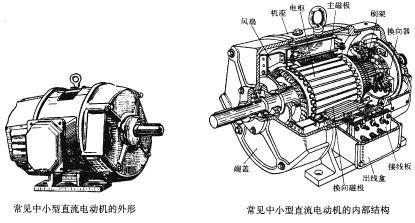
2, AC asynchronous motor
AC asynchronous motor is a kind of motor widely used in industry. It is characterized in that the stator and rotor are laminated by silicon steel sheets, and the two ends are covered by aluminum cover. There are no mechanical parts between the stator and the rotor, and the structure is simple. The operation is reliable and durable, and the maintenance is convenient. AC asynchronous motors are more efficient than DC motors of the same power, and the quality is about one-half lighter. If the vector control method is adopted, the controllability and the wider speed range comparable to those of the DC motor can be obtained. AC asynchronous machine is the most widely used motor in high-power electric vehicles due to its high efficiency, high specific power and high speed operation.
However, in the case of high-speed operation, the rotor of the motor generates severe heat, and the motor must be cooled during operation. At the same time, the drive and control system of the asynchronous motor is complicated, the cost of the motor body is also high, and the inverter needs to provide additional no-operation during operation. The power is used to establish the magnetic field. Therefore, compared with the permanent magnet motor and the switched reluctance motor, the efficiency and power density of the asynchronous motor are low, which is not the most efficient choice for energy efficiency.
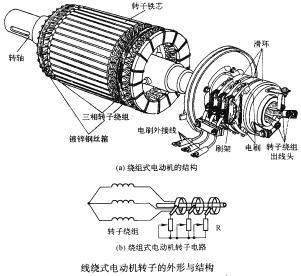
The area where asynchronous motor applications are used is the United States, which is also artificially related to road conditions. In the United States, highways have a certain scale. Except for large cities, cars generally continue to travel at a certain high speed, so asynchronous motors that can operate at high speeds and have higher efficiency at high speeds are widely used.
3, AC asynchronous motor
The permanent magnet motor can be divided into two types according to the current waveform of the stator winding. One is a brushless DC motor, which has a rectangular pulse wave current; the other is a permanent magnet synchronous motor, which has a sine wave current. The two motors are basically the same in structure and working principle. The rotors are permanent magnets, which reduce the loss caused by excitation. The windings on the stator are driven by alternating current to generate torque, so cooling is relatively easy. Since this type of motor does not need to be equipped with a brush and a mechanical reversing structure, no commutation spark is generated during operation, the operation is safe and reliable, the maintenance is convenient, and the energy utilization rate is high.
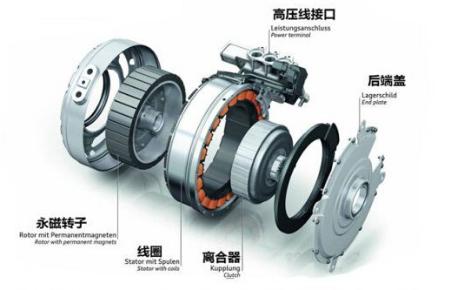
The control system of a permanent magnet motor is simpler than the control system of an AC asynchronous motor. However, due to the limitation of the permanent magnet material itself, the permanent magnet of the rotor will demagnetize under the conditions of high temperature, vibration and overcurrent, so the permanent magnet motor is prone to damage under relatively complicated working conditions, so this piece Still have to continue to develop and improve.
Moreover, the price of permanent magnet materials is relatively high, so the cost of the entire motor and its control system is relatively high. At present, only China with abundant rare earth resources tends to use the electric vehicle drive scheme of permanent magnet motors. For example, in Japan and Europe, permanent magnet motors are used for permanent magnet materials using light rare earths, or switched reluctance motors with higher requirements for controller design are directly used instead of rare earth materials.
4, switched reluctance motor
Switched reluctance motor is a new type of motor. Compared with other types of drive motors, the structure of switched reluctance motor is the simplest. The stator and rotor are double salient pole structures made of ordinary silicon steel sheets. There is no rotor on the rotor. The winding and the stator are equipped with simple concentrated windings, and have many advantages such as simple and sturdy structure, high reliability, light weight, low cost, high efficiency, low temperature rise and easy maintenance. Moreover, it has the excellent controllability of the DC speed control system, and is suitable for use in harsh environments, and is very suitable for use as a drive motor for electric vehicles.
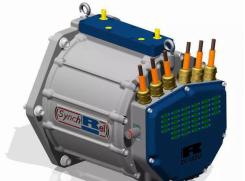
However, the switched reluctance motor has large torque fluctuation, requires position detector, nonlinear characteristics of the system, the magnetic field is skipping rotation, the control system is complicated, and the DC power supply generates a large pulse current. In addition, the switched reluctance motor is a double salient pole structure, and torque ripple is inevitable. Noise is the main disadvantage of the switched reluctance motor.
However, recent studies have shown that the noise of switched reluctance motors can be well suppressed by reasonable design, manufacturing and control techniques. Like Japan's current research on switched reluctance motors, Japan's switching reluctance motors are also widely used in electric vehicles, home appliances and other industries. At present, there are gradually manufacturers in China paying attention to the future development direction of this electric vehicle drive motor.
Create efficient new energy vehicle drive motors
Based on the in-depth exploration and long-term accumulation of the motor and electric vehicle industry, Zhiyuan Electronics successfully integrated special test items for new energy vehicles on the MPT series motor test system - MAP map and regenerative energy feedback test for the majority of electric vehicle motor designers. Provide excellent test solutions.
1, MAP map
According to GB/T 18488-2015 test standards for drive motor systems for electric vehicles, MAP map testing is required for new energy vehicle drive motors to obtain the efficiency characteristics and high-efficiency zone distribution of the motor. The actual test results of the MAP map are as follows:
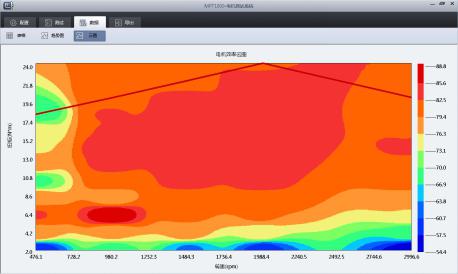
In the figure, the horizontal axis is the rotational speed, the vertical axis is the torque, and the color indicates the efficiency. It represents the distribution of the efficiency characteristics of the motor under different working areas (rotational speed, torque), and the orange-red part is the high-efficiency area of ​​the motor. . The wider the distribution of high-efficiency zones, the more power-saving the motor operates under various operating conditions.
Zhiyuan electronic MPT motor test system built-in MAP automatic test function, according to the user's preset loading situation, automatically control the load and the test motor to load the corresponding working conditions, obtain the efficiency under different working conditions, and finally integrate the massive test data. Into a MAP map, intuitively analyze the efficiency characteristics of the motor and the distribution of high-efficiency zones.
2. Regenerative energy feedback test
According to GB/T 18488-2015 test standard for drive motor systems for electric vehicles, it is also necessary to carry out regenerative energy feedback test for new energy vehicle drive motors. The purpose of this test is to consider whether the drive motor can normally realize the feedback of electric energy when braking, that is, when it is running in the generator state, and at the same time evaluate the real energy consumption of the motor.
For the regenerative energy feedback test of the drive motor, the Zhiyuan motor MPT motor test system can flexibly utilize the integral function of the built-in MDA motor and the drive analyzer to integrate the input of the motor controller in real time to accurately capture the feedback of the motor during braking. Energy value.

At the same time, for the DC charging and discharging characteristics between the motor controller and the power battery, the special motor charge and discharge integral function of the remote motor can perform real-time integration of the sampling rate of the electrical signal at the input end of the motor controller, even if the motor is in the motor state and the generator state quickly. Switching between them can also capture the energy transfer between the motor and the power battery over a period of time.
Wireless Fence,Wireless Dog Collar,Wireless Dog Fence,Wireless Electric Dog Fence
Elite-tek Electronics Ltd , https://www.aetertek.ca